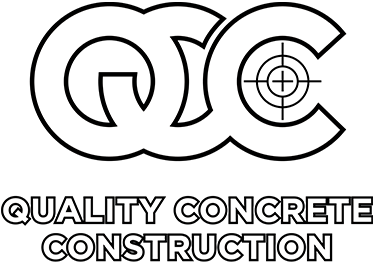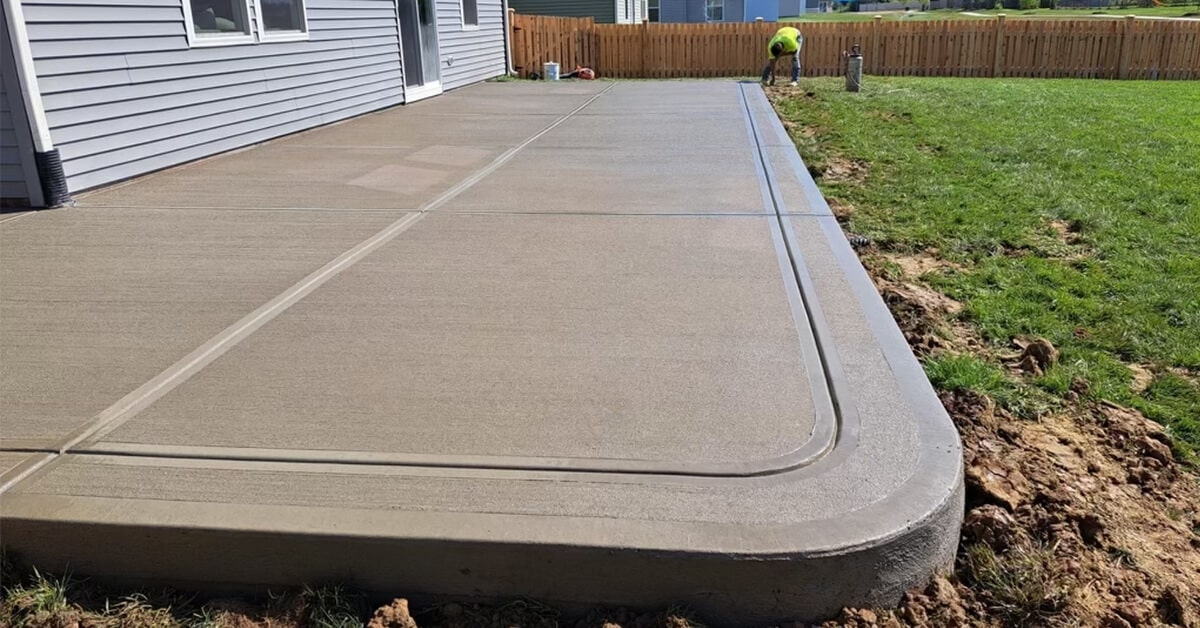The process of curing concrete requires careful preparation and attention — it’s not just a “set it and forget it” task. When properly installed by experts, concrete is a strong, durable material that will last. Here are some helpful notes on what to expect as you watch your new concrete cure.
1. Initial Curing Phase (0-24 hours)
As soon as the concrete is poured, this first stage begins. It’s a critical step in the curing process when the material changes from a liquid to a solid. If not protected, the surface of the concrete can dry more quickly than the material below, forming spider cracks (also called craze cracks).
The surface of the concrete should be kept moist during this time. Your concrete contractors can use methods like fogging, misting, or evaporation retarders. They may also cover the surface with wet burlap or plastic sheeting to prevent moisture loss.
2. Intermediate Curing Phase (1-7 days)
At this point, the concrete has set, but moisture and temperature should still be kept consistent to ensure the concrete stays strong. Concrete experts will use techniques like continuous water curing (submerging or spraying with water) to keep it moist during this time.
A temperature between 50°F and 85°F (10°C to 30°C) should be maintained. If the concrete is exposed to more extreme temps, it can crack. When the concrete is curing in cold weather, insulating blankets or heated enclosures can be effective. Contractors may use shade or windbreaks in excessive heat.
3. Final Curing Phase (7-28 days)
It’s during this phase that the concrete gains most of its strength. Though it’s progressing nicely at this point, it is still critical that the concrete is allowed to gradually dry out — as surface cracking is still a risk. In the final curing phase, controlled curing compounds or sealants can be applied to help retain moisture as it dries fully.
4. Post-Curing Considerations
After 28 days, the process of curing concrete is considered complete. The concrete will have achieved 70-90% of its final strength during this time. However, there are still important considerations if your concrete is to maintain its strength and durability in the future.
Sealants can be used to protect the concrete from environmental damage, chemical spills, and wear and tear. It’s important to check for cracks and signs of distress regularly, as they can lead to more serious problems over the life of your concrete.
Common Challenges, Notes, and Tips
- You may notice that your concrete isn’t in one solid slab — it’s divided into squares no more than 10 square feet. If left any larger, the concrete will crack.
- You may see color changes as the concrete hardens and cures. This is a natural part of the process, and can be influenced by the soil beneath the concrete. If you’re concerned about the color of your uncured concrete, check with your concrete contractor to ensure that it was properly installed.
- Imperfections and spots can appear as the concrete cures. This is a normal part of the concrete curing process.
- Remember — concrete will show cracks at some point in its lifetime. With proper installation and curing, it should remain crack free for some time.
Trust Your Concrete Contractor
In order to ensure your concrete cures properly, hire an experienced concrete contractor. They will be aware of conditions that will negatively impact curing, and will mitigate these risks. Measures like curing blankets, fogging systems, or even temporary shelters can counteract adverse weather conditions. Using a high-quality concrete mix and following proper mixing, pouring, and finishing techniques will also ensure that the concrete will remain strong.
Work with Us
Quality Concrete Construction has the skill and experience to ensure your concrete is properly mixed, poured, and cured. We’d be happy to talk with you about your project and future plans – contact us today.

